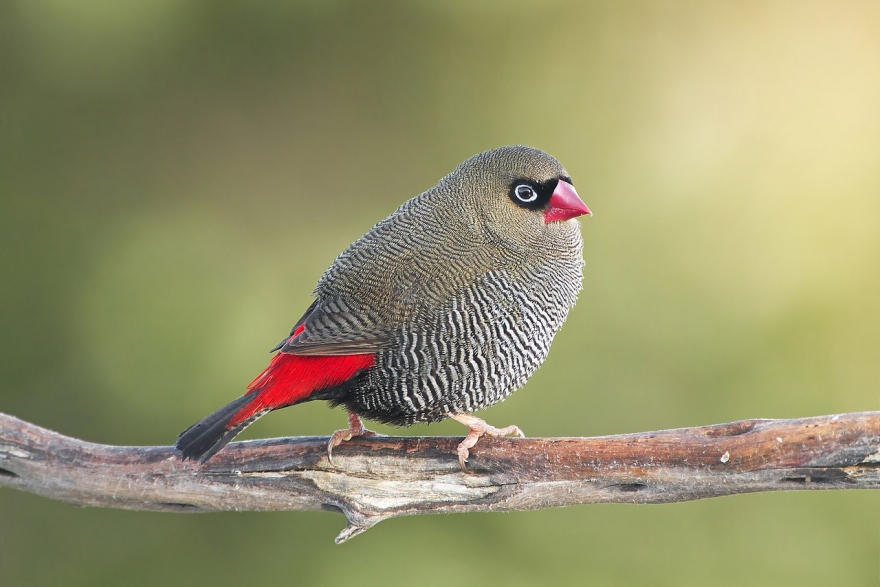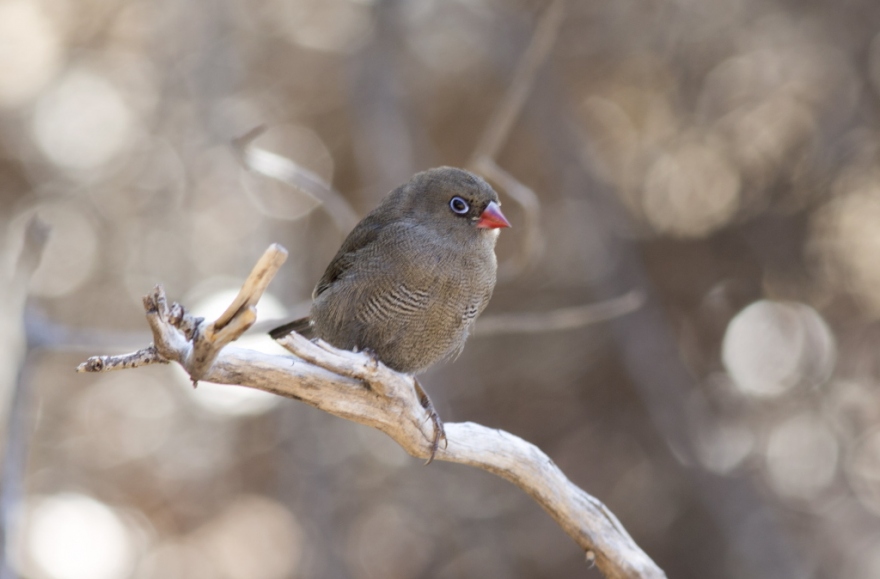Beautiful firetail finches are an Australian species found in scrublands throughout the southeast of the country, including Tasmania. Though not especially rare in the wild, they are among the least commonly kept Australian finch in aviculture, owing to their challenging housing and care requirements.

Housing & Compatiblity
Beautiful firetail finches are probably compatible with most other Australian finches, however their rarity dictates that they should be housed in single-pair aviaries. They are shy birds that do best in large, densely planted aviaries with lots of hiding places.
As green foods make up a considerable proportion of their diet, planting seeding grasses in the aviary can help to provide a steady supply of suitable food while also stimulating their natural feeding behaviours.
Diet & Feeding
A quality finch seed mix including canary seed and various millets forms the basis of the beautiful firetail finch’s diet. Sprouting seed increases its nutritional value and is an effective way to improve your bird’s health and breeding performance. Freshly grown green seed heads should also be offered frequently.
In addition to a steady supply of green seeding grasses, leafy greens should also be offered throughout the year. Kale, bok choy, endive, and silverbeet are popular choices that will be readily consumed.
Live food is an important component of the beautiful firetail’s diet and should be provided throughout the year—especially during the breeding season. Mealworms, maggots, termites, and small crickets are suitable live food options.
Do not feed anything from the list of forbidden foodsforbidden foods.

Breeding
Beautiful firetail finches breed from spring through to early summer. The hen should be at least 12 months old to reduce the risk of breeding-related health issues such as egg binding.
They’re not too keen on artificial nesting recepticals, preferring to construct a nest in dense brush that’s a good meters above ground level. They will construct a dome-shaped nest with an entrance tunnel from fine strands of dry grass. Avoid nest inspections unless absolutely necessary, and wait for young chicks to fledge before attempting to attach leg rings.
They typically lay 4-6 eggs in each clutch, which are incubated by both parents for approximately 14 days. Young birds fledge the nest at three weeks of age and are usually independent a month later. You birds will need to be seperated from their parents once they become independent.
Sexing
Male birds have a dark black patch on their bellies that females do not. The sexes are otherwise quite similar in appearance.
Mutations
There are no established beautiful firetail mutations.
Health
The beautiful firetail finch’s diet is high in live food, making them especially vulnerable to parasite infection. A strict worming and parasite control regime should be implemented to ensure their long-term health. We recommend Moxidectin Plus.
These birds are shy and elusive by nature. In cramped or overcrowded aviaries, they can succumb to stress-related illnesses.
Healthy birds can be expected to reach approximately 6-8 years of age.